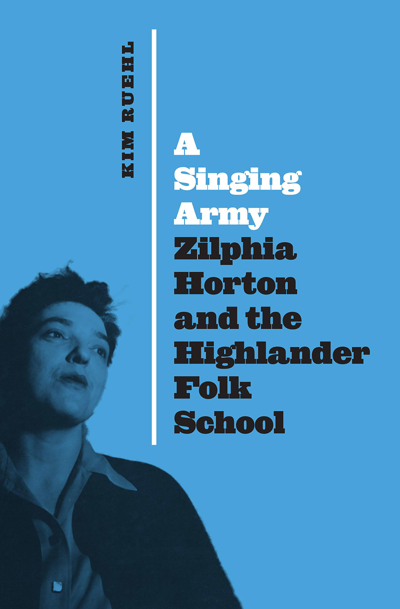
You might not know Zilphia Horton by name, but if you’ve attended a protest in the past half-century, you’ve probably sung her work. Horton arranged songs like “We Shall Overcome,” “We Shall Not Be Moved” and “This Little Light of Mine” for group singing, which helped them become anthems of the civil rights and labor movements. As the music and drama director at the Highlander Folk School in Monteagle, Tenn., she drew on the communal power of performing arts to help organize community activists, and collaborated with Rosa Parks and Pete Seeger among others to signal-boost their activism around important causes of the day.
Because Horton’s creative output was so collaborative, and because she died at 46 from a tragic accident — a few years before other civil rights icons would visit the school — her name has been forgotten by all but the most ardent folk-music scholars. With A Singing Army: Zilphia Horton and the Highlander Folk School, published in April, former No Depression editor Kim Ruehl introduces the teacher and musicologist to activists and Americana music enthusiasts alike.
Though she grew up in a comfortable middle-class home in Arkansas, Horton was aware of injustice in the world from a young age. Her father, Robert Guy Johnson, worked as the manager of a coal mine, where he came into contact with members of the Industrial Workers of the World and went out of his way to hire Mexican immigrants to work in the mines. Racial injustice was implicit and explicit in Paris, Ark., where the Johnson family lived on a street that was then called Klan Road, and Zilphia’s sisters occasionally played piano at the nearby klavern, a Ku Klux Klan meeting house. Ruehl describes Horton’s early creative ambitions — such as the glee club she founded at school and the scenery and costumes she designed for her reign as Paris’ Paving Jubilee Queen — but also foregrounds her early awareness of racial and class injustice.
“Her earliest memories of labor disputes were inextricable from the prejudices she witnessed from adults toward anyone who didn’t have white skin or speak English,” Ruehl observes. “The way she experienced these things as interrelated tells us much about how she would later hop seamlessly from labor to civil rights, organizing as though they were two parts of a whole.”
After debunking the persistent myth that Horton became permanently estranged from her family when she participated in an attempt to organize the workers in her father’s mine, Ruehl follows Horton to the then-new Highlander Folk School, where the recent college graduate made her name as a teacher, a gatherer of songs and an organizer. In these chapters, we also meet Highlander School founder Myles Horton (read more about him in this week's books story), whom Zilphia would eventually marry. “Trying to serve people and build a loving world was the entire motivation for Myles Horton’s life,” writes Ruehl, “and it was to be the glue that connected him with Zilphia, who shared this mission.”
The pair married after a whirlwind courtship, and the letters reproduced in the book find the couple to be as passionate about social justice as they are about each other. Ruehl depicts the modernity of their marriage, from their independence as a couple to the officiation of their wedding by a labor leader; there are allusions to theirs being an open relationship.
Zilphia Horton confronted issues that confound some activists today. While she was supportive of the burgeoning civil rights movement, her privilege informed her interactions with Black women she met while studying at the New School. As she contextualizes excerpts of a pair of entries from Horton’s journals, Ruehl writes that “Zilphia had … come to recognize her privilege and her prejudices. She wanted to connect with a stranger, however awkwardly, despite it all.”
Music and the arts gave Horton and her colleagues the opportunities for connection that they sought. Activities as seemingly apolitical as square dancing and singing nursery rhymes gave her the opportunity to talk about the importance of unionization, community and civil rights. “Square dancing … is an intrinsic lesson in how previous generations confronted the darkest difficulties of their times and celebrated despite those troubles,” writes Ruehl. “It’s a lesson in collaboration across differences.”
Throughout A Singing Army, Ruehl reasserts Horton’s belief that “the arts are not dressing,” but rather an important aspect of political organization that allows people from different backgrounds to understand one another’s struggles and find common ground. Ruehl’s invocation of Horton’s beliefs plays like the catchy refrain to one of Horton’s labor songs, emphasizing the importance of her ideals and showing readers another way to organize and connect with others.
Over the past year, Americans have borne witness to both frightening divisions in our country and potent reminders of the need for social justice. If we’re to change anything, finding common ground with strangers who might not hold your views is as necessary a task as it is daunting. Through her subject’s incredible life and through her straightforward, observational style, Ruehl illuminates a story bound to inspire 21st-century artists and activists.





